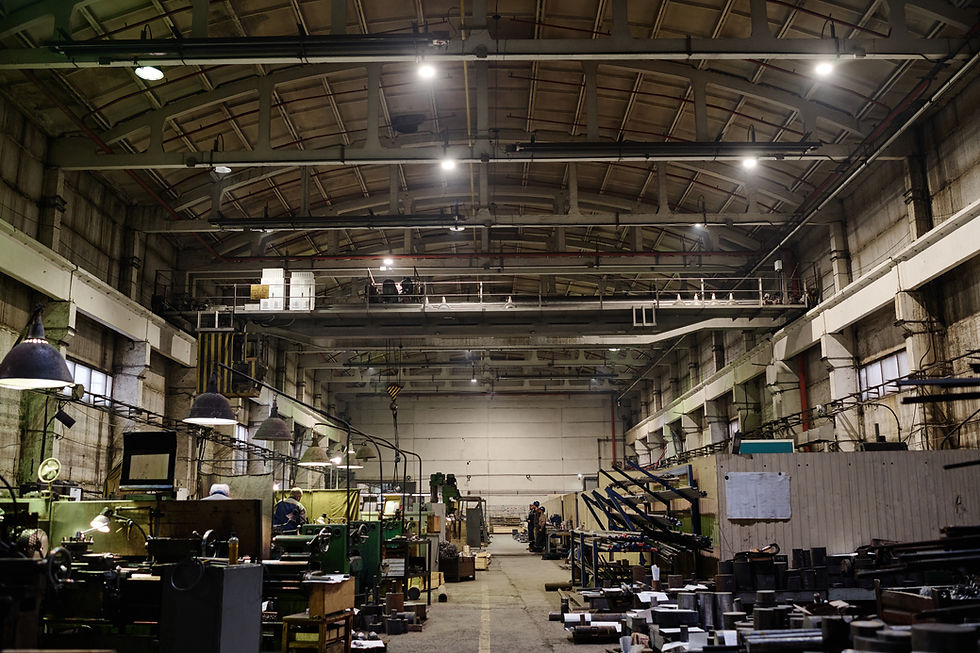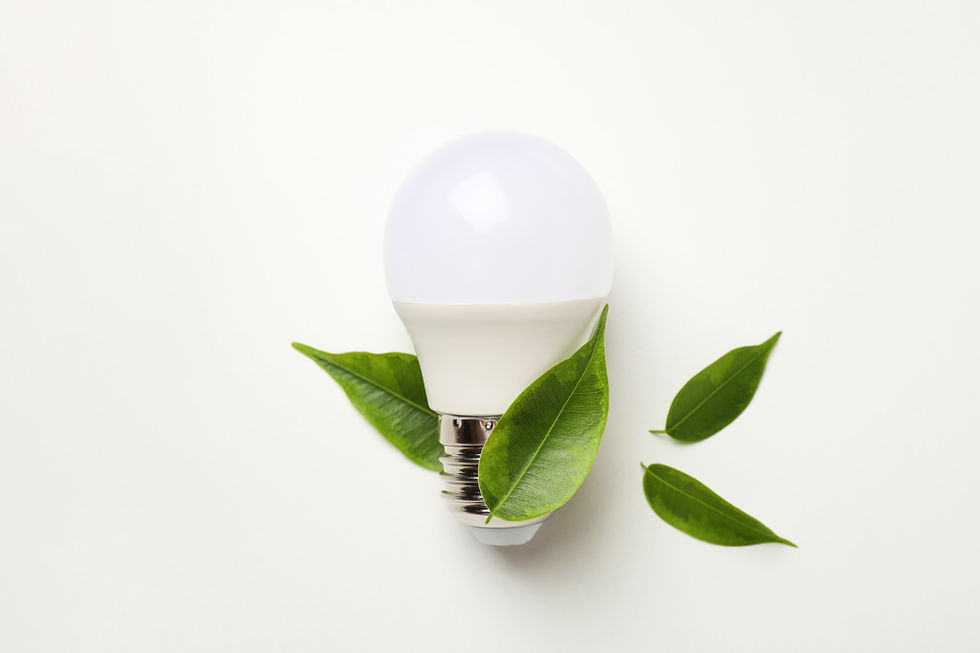Common Mistakes When Installing Industrial Lighting and How to Avoid Them
- floomarktechnology
- May 14
- 4 min read

When it comes to industrial lighting, getting the installation right is just as important as choosing the right fixtures. Poor lighting can lead to safety hazards, lower productivity, and increased energy costs. According to the U.S. Department of Energy, lighting accounts for over 11% of total electricity use in the industrial sector—which means that efficient installation is key to maximizing savings and performance.
Whether you're outfitting a manufacturing plant, warehouse, or large-scale facility, avoiding common mistakes during installation can save time, money, and future headaches. In this article, we’ll highlight some of the most frequent missteps in industrial lighting projects—and share practical tips to help you avoid them.
1. Skipping the Lighting Design Plan
One of the biggest mistakes is jumping straight into installation without a proper lighting layout. Many businesses underestimate how vital a design plan is to the success of their lighting system.
Why it’s a problem:
Uneven lighting distribution
Over- or under-illumination in key areas
Wasted energy and poor ROI
How to avoid it:
Work with a professional lighting designer or engineer who can evaluate your facility’s layout, ceiling height, natural light sources, and tasks performed in different zones. A detailed plan ensures uniform illumination, optimized placement, and the right choice of fixtures for each application.
🛠 Pro Tip: Brands like Havells Lighting, known for their precision-engineered LED solutions, often provide design assistance and photometric analysis to help you achieve the perfect layout.
2. Choosing the Wrong Fixture Types
Not all lights are created equal. Industrial environments demand robust, purpose-built lighting fixtures—yet it’s common to see offices, warehouses, and factories using fixtures not designed for their conditions.
Common mismatches:
Using indoor-rated fixtures in damp or dusty environments
Installing low-lumen lights in high-ceiling areas
Selecting non-LED options that consume excess energy
How to avoid it:
Opt for industrial-grade LED fixtures with the appropriate IP rating, lumen output, and color temperature for the space. For example, Havells’ Jeta Flare Flood Light is IP65-rated and built for rugged performance in challenging environments.
📊 Stat to know: LEDs can reduce lighting energy use in warehouses by up to 70%, especially when combined with smart sensors and controls.
3. Ignoring Mounting Height and Beam Angle
Mounting height plays a crucial role in lighting performance. Installing fixtures too high or too low without adjusting beam angles can create shadowed areas or glare.
Why it matters:
Insufficient light at workstations
Glare that affects employee comfort
Overlapping beams causing inefficiency
How to avoid it:
Measure ceiling height and select fixtures with beam angles designed to disperse light evenly across the target area. Use adjustable mountings or lens options when needed.
📐 Quick Tip: In high-bay installations (over 20 feet), narrow beam angles (e.g., 60°) work best to focus light downward, while low-bay setups (under 20 feet) benefit from wider angles (e.g., 120°).
4. Overlooking Lighting Controls
Another common oversight? Not integrating smart lighting controls. Without them, you're missing out on substantial energy and cost savings.
Consequences:
Lights stay on when not needed
Higher energy bills
Faster wear and tear on fixtures
How to avoid it:
Install motion sensors, daylight harvesting systems, and dimmable controls to automate lighting use based on occupancy and ambient light levels. Modern fixtures from Sign Lights LED by Havells come with built-in control options for easy integration.
💡 Fact: Facilities using lighting controls can cut energy use by an additional 30% to 50%, according to the U.S. Department of Energy.
5. Improper Wiring and Installation
Even with the best equipment, poor installation can lead to electrical issues, flickering, or complete fixture failure. Common electrical mistakes include loose connections, incorrect voltage pairing, and overloading circuits.
Risks include:
Fire hazards
Frequent maintenance
Warranty voidance
How to avoid it:
Hire a licensed commercial electrician familiar with industrial lighting systems. Follow all NEC (National Electrical Code) standards and manufacturer guidelines.
🛠 Installation Tip: Choose lighting products from established brands like Havells Lighting, which provide detailed installation manuals and technical support.
6. Neglecting Maintenance Planning
Many facility managers forget to account for future maintenance when installing lighting. If fixtures are hard to access or require specialized tools, maintenance becomes expensive and disruptive.
Issues caused:
Delayed repairs
Reduced light output over time
Increased labor costs
How to avoid it:
Plan for accessibility. Choose fixtures with long lifespans (like Rapid Lamps Generation
3 LED Tubes from Havells) and modular components that make servicing easier.
Consider the use of lighting systems with remote monitoring to detect issues before they escalate.
7. Not Considering Safety Standards and Compliance
Industrial lighting must comply with OSHA, ANSI, and local building codes. Non-compliance can lead to penalties, increased liability, and insurance issues.
Common compliance mistakes:
Inadequate emergency lighting
Wrong color temperatures for task lighting
Poor visibility in critical safety zones
How to avoid it:
Stay up to date with national safety standards and consult certified lighting professionals during planning and installation. Havells products are UL-listed and OSHA-compliant, giving you peace of mind and legal assurance.
Conclusion: Light Up the Right Way
Proper industrial lighting installation is more than just screwing in a few fixtures—it’s a strategic process that directly impacts safety, efficiency, and operational costs.
Key Takeaways:
Start with a detailed lighting plan tailored to your facility.
Use purpose-built, energy-efficient fixtures from trusted brands like Havells Lighting.
Incorporate smart controls for greater energy savings.
Prioritize proper installation, safety compliance, and future maintenance.
By avoiding these common pitfalls, you not only extend the life of your lighting system but also improve workplace safety, enhance productivity, and reduce long-term costs. Ready to upgrade your facility’s lighting? Choose Havells Lighting —America’s trusted source for high-performance industrial and commercial lighting.



Comments